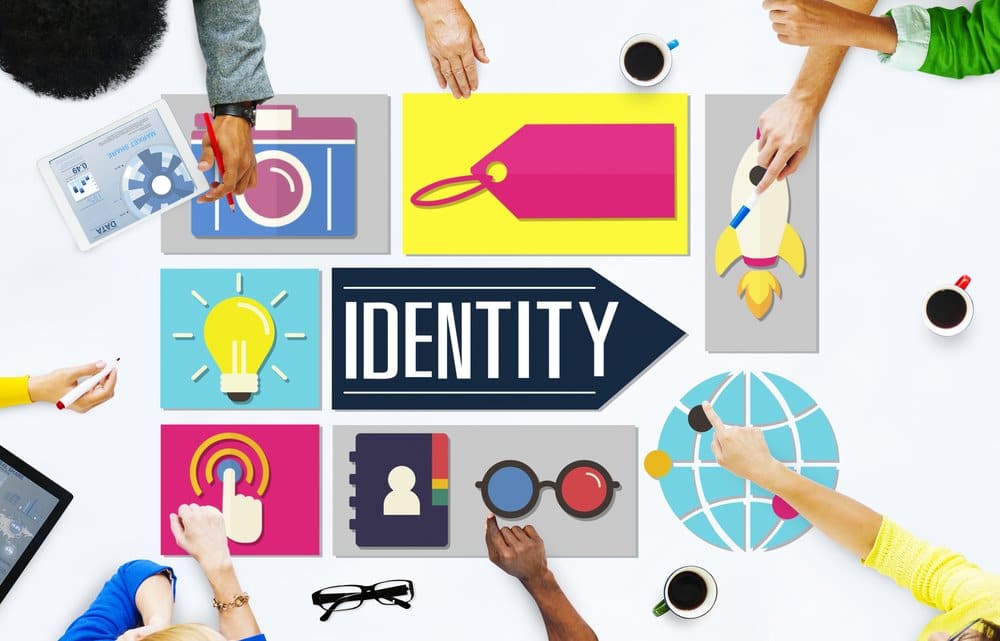 What identifies your CPG brand? What distinguishes it from the others? It’s not what you think, it’s what your customers think! You may have some influence on what they think, but ultimately, it’s what they think.
What identifies your CPG brand? What distinguishes it from the others? It’s not what you think, it’s what your customers think! You may have some influence on what they think, but ultimately, it’s what they think.
Contrary to popular belief, most brands are not killed by the competition – they die from self-inflicted wounds! Those wounds are caused by well-meaning marketing people who think they are in control, and try to create a brand identity based upon what they like, and not necessarily what your customers like. In other words, you don’t “own” your brand. Your customers do!
Any discussion about brand identity has to start with this relatively humble but essential recognition. Sure, there are things you can do to sway their thinking, but be careful when building your brand identity that it is on a firm foundation of what your customers already think is important!
1. Brand Image. How does your CPG brand look to your customer?
Is it on a screen, on a retail shelf, or in a floor display? Is it seen from 2 feet away, 4 feet away, or 20 feet away? Is it on both a business card and a billboard? Is it different for each case and why?
Is it surrounded by other branded products? How does it stand out compared to them? Does its choice of colors make it pop out from the crowd? What about its name, label, logo, catchphrase, package, trade dress, and themes? Is it clear to your customer what you are selling? Are your cartons clearly marked and color-coded so the trucker, warehouse person, store manager and clerk all know what you’re selling?
Is your name easy to pronounce, memorable, and recognizable? Does it have something to do with what you are selling? Can you easily read it from a distance? If you were looking for it, could you pick it out from the “pizza” of branded product offerings on the shelf?
Does your marketing trade dress reflect the seasons, events, and holidays? Does it change out often so it is always fresh?
Is your artwork balanced and uncluttered with plenty of white space and non-serif fonts? These are just some of the considerations to ponder when designing your brand image.
2. Brand Recognition. Can your customer recognize your brand?
What is the outstanding feature in your brand identity that is memorable? Have folks seen it before on your site or in your advertising? Will they recognize its individuality when they get to the store?
What have you done to help them remember your brand? Is it something they see every day? Is it an image they already have when they think about some aspect or feature of your branded product? Is it a color or shape that is unforgettable? Do you have third-party endorsements on your label, package, or trade dress from people your customers already identify with?
Or have you been in business for so long with consistent sales that you have a reputation for delivering some value your customer identifies with your brand? This takes time and excellent distribution management to establish, but it has sustained many brands that people look for as part of their regular supplies. In this case, a family name or nonsense name has been around long enough to gain traction. This approach is not advised for new branded products. It takes years of repetition and excellent customer service to achieve this type of brand recognition.
When you change, freshen up, or ‘improve’ your image, do you practice careful and staged evolution or shocking and reckless revolution? All of a sudden, is the brand they’re looking for “gone”?
3. Brand Position. How does your customer perceive your brand?
How do you position your brand by price? What is the velocity price point (the price at which the majority of branded products in your category sell)? Is your price the same? If so, how do you compete? Are you delivering more quality or more quantity? Or do you appeal to a different customer value like status, awards, or endorsements?
 Are you positioned below the velocity price point and attempting to undercutting the pack? Does your customer expect less, and are they willing to accept less to save the money? Does a lower price in your category provide more convenience? Or are you positioned above the velocity price point and gaining customers who believe that if it costs more, it’s bound to be better? Or are you simply delivering more value and necessarily having to charge more to stay solvent?
Are you positioned below the velocity price point and attempting to undercutting the pack? Does your customer expect less, and are they willing to accept less to save the money? Does a lower price in your category provide more convenience? Or are you positioned above the velocity price point and gaining customers who believe that if it costs more, it’s bound to be better? Or are you simply delivering more value and necessarily having to charge more to stay solvent?
What about value? Does your brand image reflect value? What about your label, package, and trade dress? Are you employing quality queues such as gold ink, medallions, or traditional styles to communicate quality? Or are you using endorsements and user comments?
What does your choice of package communicate? Is it taller than the others to imply value or quantity? We’ve found, for instance, that taller packages are perceived as greater in volume. A one-liter box of wine, for instance, is perceived as less volume than a 750-ml. bottle because of its shorter stature.
What category are you in? And what sub-category within that category are you in? This all makes a big difference in your customers’ perception. Repositioning your brand after it is established, risks losing the customers used to finding your brand in your former brand category. Be careful!
4. Brand Promise. How does your customer expect your brand to behave?
This is where most brands fail! They mistakenly believe that they control their brand promise. They believe that the brand image they have projected online, through advertising, and in their trade dress is a one-way message to their customers about what to expect from their brand, their product, and even their company.
While it is true that your customer gets their initial impression about what to expect from these initiatives, ultimately, they own your brand promise. It is their expectation about the behavior of your brand that drives sales, loyalty, and advocacy. The main reason they change brands is that their brand let them down. It did not live up to their expectations.
And what are those expectations? Quality, price, quantity, appearance, utility, status, popularity, transparency, availability, and a myriad of other factors that are noticeable to your customer. If you change any of them, be prepared for a reaction in the marketplace. Customers like to be loyal to brands they depend on. Shopping for a new brand is downright frightening. What are they going to get now? And how many brands do they have to go through to get what you had given them, but they somehow lost?
What about integrity? Do you deliver what you advertise? Does your branded product consistently deliver the same or improved features and benefits over history? Your customer’s expectations are shaped by their history with your product. Don’t upset them by making quick, unexpected changes.
Is your branded product dependable? Can your customer depend on it? Is it in stock where they purchase it? If not, they will blame you and think your brand is undependable.
5. Brand Personality. Do you have a spokesperson or fictitious character to represent your brand?
Is there a face behind your brand, someone with whom your customer can identify who is “responsible” for delivering your brand promise? Is it someone they already know, like a celebrity? Or is it the CEO, President, or Founder of your company? Is it you? Does anybody look them in the eye and guarantee your brand?
Does your brand have a mascot, a cartoon character, or a specific style that conveys some aspect of your brand? Or does the brand have a personality itself? Is it fun, dignified, strong, serious, dependable, effective, powerful, or carefree?
Your brand’s personality will help with your brand’s image, position, and promise. Personal assurances can encourage first-time buyers and turn customers into advocates.
What does your brand stand for besides the mercantile qualities it delivers? Do you support your community? Are you a good neighbor? Are you a green producer? Are you a progressive employer? Are you transparent? Do you take positions on issues critical to your customers’ health and welfare? In other words, are you a good guy? Today more than ever, customers are voting with their purchases! Have you given them good reasons to vote for you and what you stand for?
6. Brand Width. How many type of products can your brand offer before it collapses?
Just like bandwidth, there is a limit to how many types of products (SKU’s – Stock Keeping Units) your brand can support. If you exceed your brand width, the retailer will start asking you which of your own products you want to cannibalize to put your new ones in.
Exceeding your brand width happens when your marketing and production people begin to think that success is a result of having more types of products, rather than more sales. Increasing your types does not necessarily translate into more sales or greater profits. In fact, it may even cheapen or confuse your brand in the eyes of your customers and retail buyers.
At first, it seems logical. By simply creating a line extension or introducing a new product, you will automatically get more retail space. Then it can become a battle to see how many new types your brand can actually support. All this is based on the mistaken idea that there is an unlimited amount of shelf space or an unlimited amount of mindshare for all the people involved in sales and distribution. There’s not! Brand width is limited!
When brands collapse, they generally retract to their core offerings and for good reason. It’s more manageable, and It’s easier to get and maintain shelf space. Are you hurting your brand image with too many line extensions?
7. Brand Availability. Is your brand still there?
The worst customer experience in the world is when your CPG brand customer can’t buy your brand because it is no longer available where they shop. Maybe it is out of stock. Maybe it is still in the back room. Maybe it has been discontinued. Maybe your distributor got on the wrong side of the retail buyer, and now he won’t buy anything from them. No matter what the reason, your customers won’t blame your distributor, and they won’t blame your retailer. They will blame your brand. Now it’s “undependable” and “hard to get” in their eyes.
Many brand builders and marketers take the distribution process for granted, but all the money, time, and effort spent on branding your CPG product is lost instantly when it’s out of stock. This is why no discussion of brand Identity can take place without a deep respect for the distribution process.
How can you design your packaging, labeling, and cartons to easily make it through the distribution process without confusion, mis-deliveries, or misunderstandings? As a producer, what kind of vigilance is necessary on your part to help guarantee delivery and maintain adequate stock of your brand in retail? What do you need to do to ensure proper pricing, placement, and advertising at the point of sale?
A big part of your brand’s identity is its reputation for dependability. That starts with convenient and reliable access but does not end until the shelf has been replenished. Your retail buyers can only measure your actual sales. Once you are out of stock, they can’t measure the sales you would have made if you had been in stock the whole time. Brands have been discontinued for poor sales caused by poor inventory control, wrong pricing, or wrong placement. Your brand image is at the mercy of the physical distribution system. They can’t buy it if it isn’t there!
As you can see, brand identity is a multifaceted orchestration of critical elements which have to be carefully created, executed, and maintained. Brand Identity is not a destination, it’s an ongoing process requiring constant diligence. When all these factors are taken into account, your customers will be more likely to say proudly, “That’s my brand!”

